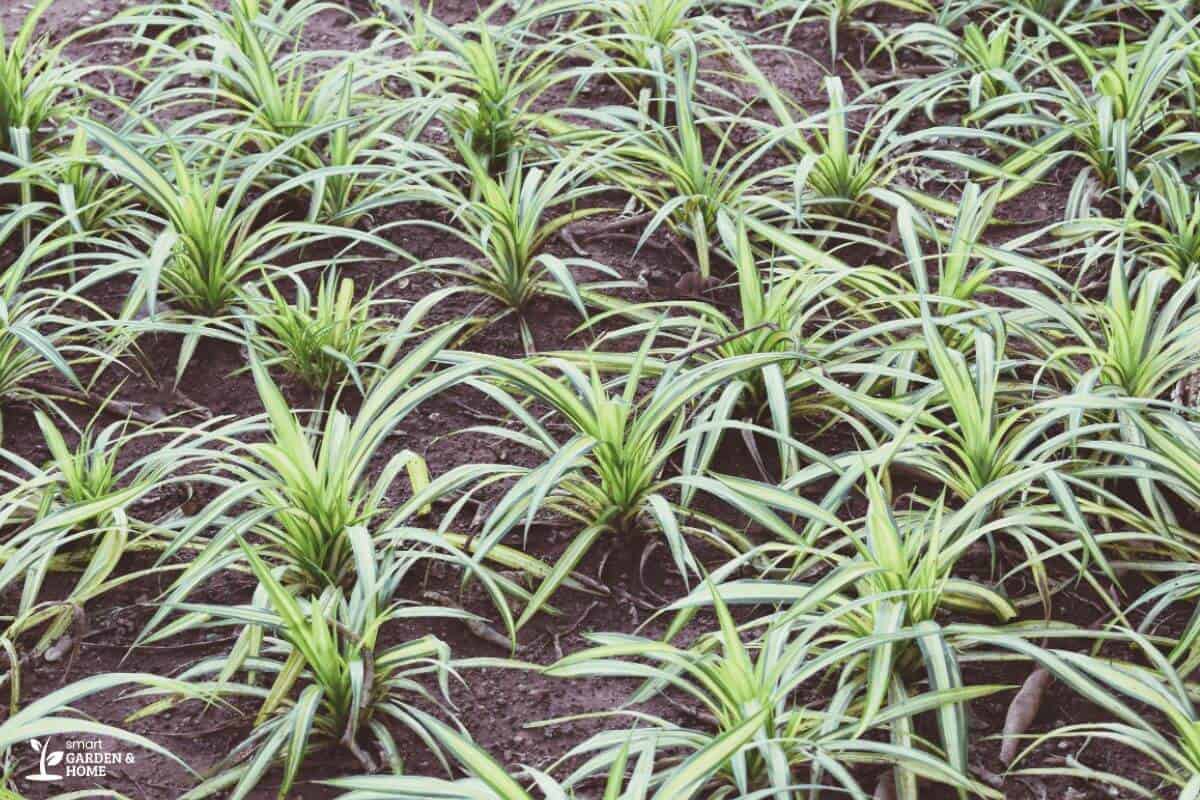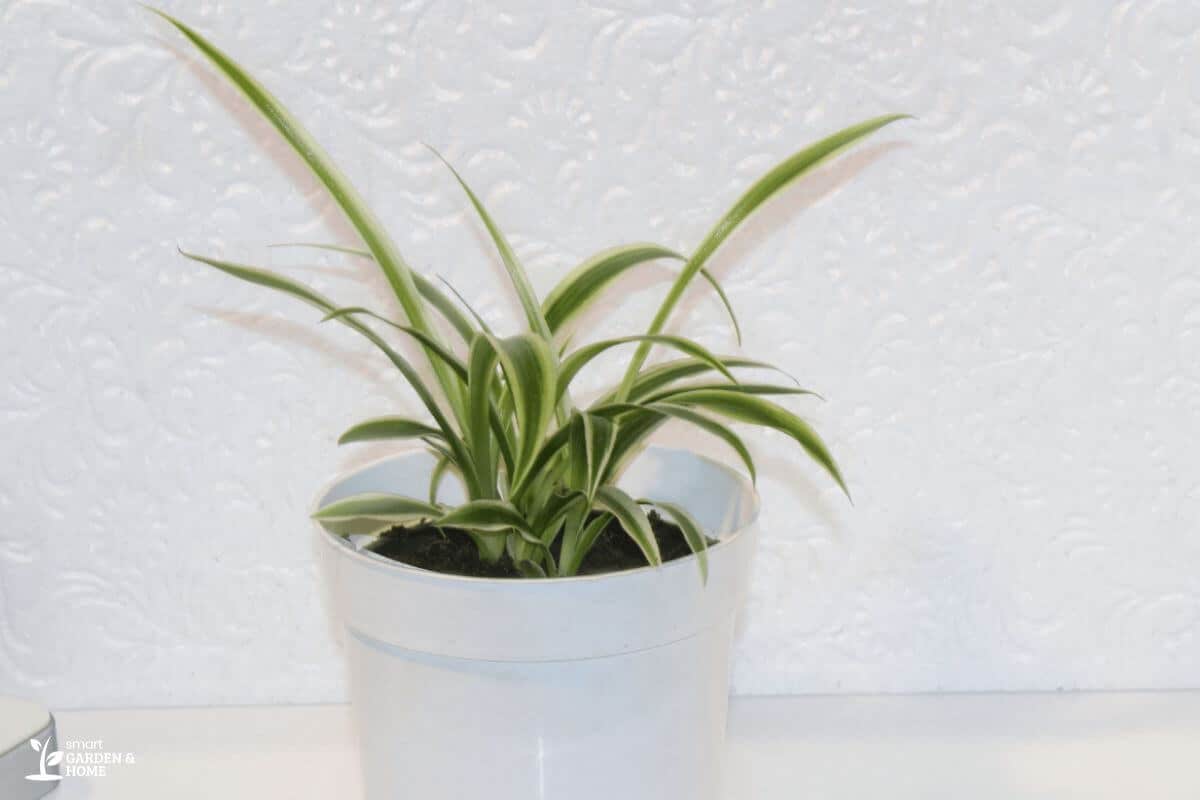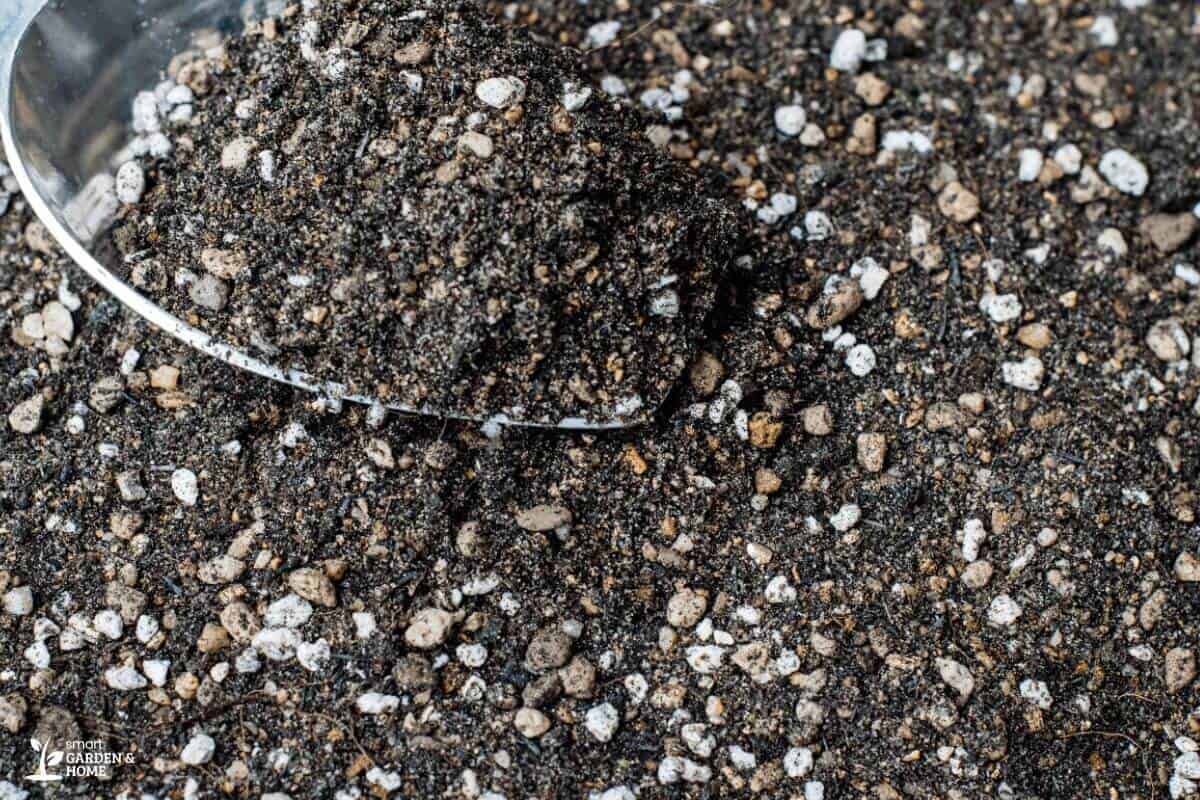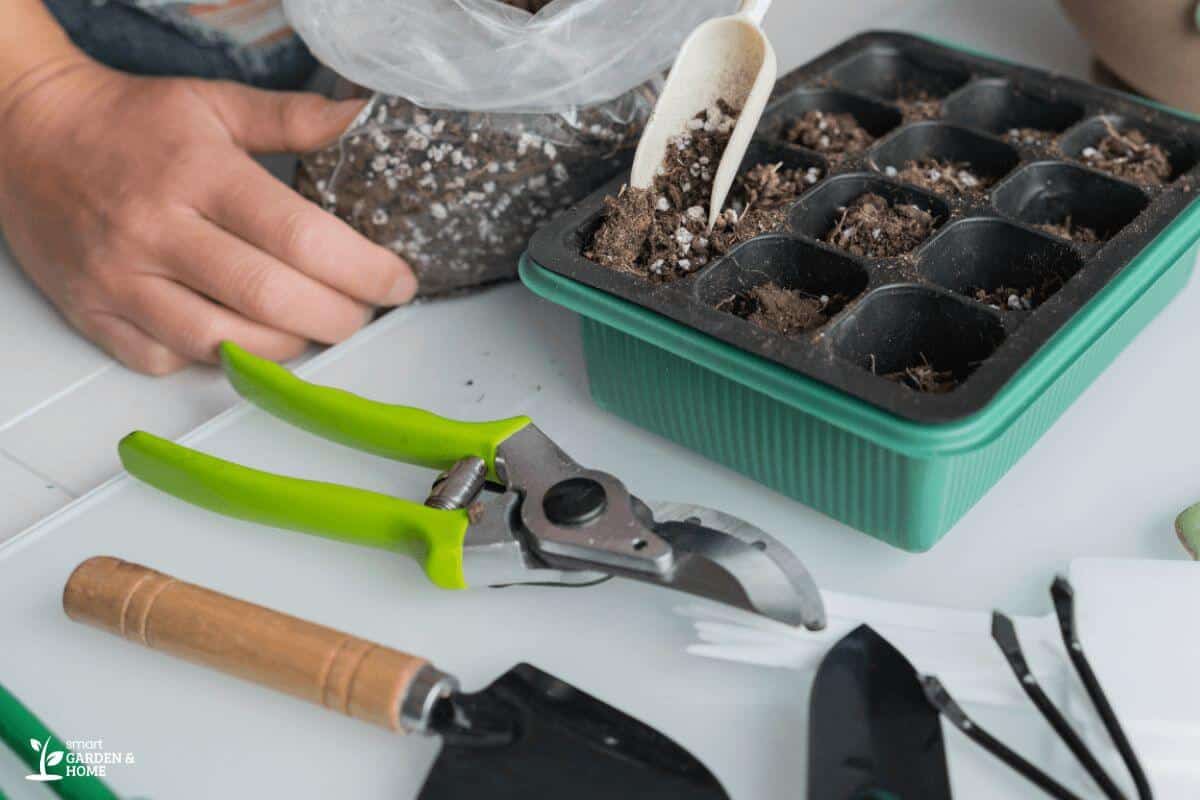Spider plants (Chlorophytum Comosum) are also known as airplane plants, spider ivy, or ribbon plant. They are notoriously easy to grow and care for since they don’t require much attention.
These plants aren’t all that fussy about potting soil and that makes them a perfect houseplant for beginners. However, there are a couple of conditions that their correct soil mix should meet.
The most likely cause of failure in growing spider plants is overwatering since these plants easily develop root rot and suffer if they are kept in soggy soil.
By using a well-draining choice of potting mix, you will provide your plant with the right amount of moisture and ensure it will thrive for many years.
- Related article: Spider Plant Care for Beginners
Best Soil for Spider Plants

Spider plants are quite adaptable when it comes to soil type requirements and most often it won’t be strictly necessary to provide them with a special soil mixture.
Be wary of keeping them too wet for a long period of time though. A spider plant’s soil should be well-draining, especially if you have a tendency to overwater plants.
If your soil doesn’t drain quickly, your spider plants could develop root rot, and the leaves could change color, develop spots, droop, curl, or, fall off.
Make sure to use a container with drainage holes and avoid dense soil that would hold too much water.
You could use high-quality organic potting soil for indoor plants, but the best solution is to use soil that contains peat moss or coco coir, perlite, and pine bark fines.
You can also mix in pumice which will help with quicker drainage.
It’s also possible to grow spider plants in Leca or a combination of soil and Leca. Leca stands for ‘Lightweight expanded clay aggregate’, that is to say, balls of baked clay that absorb a little water and let the rest drain away.
By using this material, you will ensure that your spider plants will always have the right amount of water with no risk of having them sit in wet spider plant soil.
Be aware though that if you only use Leca you will have to add nutrients to the water you give to your plants.
Spider plants would normally get what they need from the soil, but clay doesn’t contain any nutrients they can use.
Despite this disadvantage, it can still be worth it to grow spider plants in Leca, as you would greatly reduce the risk of root rot and pests.
DIY Potting Soil for Spider Plants

It’s a fun experience to make your own potting mix. Through it, you are able to tailor your soil’s drainage and water retention capacities better.
We have done the research for you and provided you with two soil mix recipes that will ensure that the basic requirements for your spider plants.
We will look at two different recipes which both work great for spider plants.
Recipe With Potting Soil
Ingredients:
- Three parts organic mix of potting soil
- 1 part perlite
- A handful of coconut coir or orchid barks
- A handful of compost or worm casting
Potting soil or garden soil is rich in organic material which will provide the nutrients your plant needs, but it could retain too much moisture. That’s why it’s necessary to add mediums to this healthy soil that drain quickly and provide some aeration, such as perlite and coconut coir.
Recipe With Succulent Soil
Ingredients:
- Two parts succulent soil mix
- 1 part compost
- 1 part coconut coir or peat moss
- A handful of worm castings
Ideal soil designed for succulents can be a good base for a potting mix for spider plants, but alone it doesn’t retain enough moisture.
That is why some coconut coir or peat moss should be added, as well as some compost to provide the nutrition the plant needs.
All these ingredients can be mixed, while the worm castings should be added on top to repel insects and protect your plant from soil-borne diseases.
When Should I Repot My Spider Plant?

Spider plants grow very quickly and therefore might become pot-bound long before you expected it. In the right conditions, a spider plant’s growth can be very aggressive and its roots can grow powerful enough to break pots.
While they can survive a small space for quite a time, they will eventually suffer from it.
You will notice that your spider plant needs repotting if the leaves turn brown and start dying. This is a sign that the plant isn’t getting enough water, which could be because the soil is drying out too quickly.
Another sign that the pot needs an upgrade as soon as possible are the roots growing above the soil. The best period to repot spider plants is during spring or summer, as they are dormant during the winter.
For best results, repot a couple of days after watering. It’s best to repot spider plants often in a container that is just slightly larger than the one before, instead of just once in a while.
Can I Use Cactus Soil for Spider Plants?

In general, it’s best not to use cactus soil for spider plants. While it is true that these plants have similar requirements in terms of soil drainage, soil for cacti holds little to no water. Spider plants wouldn’t be able to get the water they need.
This type of soil is rich in sand and more adapted to outdoor plants. Even if they can’t stay wet for too long, spider plants still need plenty of water, unlike cacti.
It could be possible to use a cactus soil mix with some adjustments, but succulent or potting soil might be a better option as a base for your potting mix.
Can I Use Succulent Soil for Spider Plants?

Just like cactus soil, the one designed for succulents doesn’t retain much moisture. While spider plants like well-drained soil, if you want to use succulent soil you should make sure that it does not drain too fast.
Soil for succulents is usually loose soil that contains a mix of sand, gardening soil, and perlite or pumice.
Depending on the ratio of these ingredients, this type of soil could drain water too quickly for spider plants to get as much as they need. In this case, the plant will suffer from dehydration and stunted growth.
Therefore, if you want to use succulent soil it’s always best to mix in other ingredients that retain moisture, such as extra peat moss, coco peat, or compost.
The recipe listed above is a good example of a potting mix that improves on basic succulent soil to offer the nutrients and water retention capacity that spider plants need.
Final Thoughts on the Best Soil for Spider Plants
Spider plants can survive in a wide range of soil blends, but to get the best results you should create a special potting mix that is tailored to their needs. The wrong soil mix might result in root rot and kill your plant.
Succulent or cactus soil can be used as a base for your mix, but they need to be combined with other ingredients like coconut coir, perlite, peat moss, and compost.
Repotting often also helps spider plants thrive, so you should pay attention to signs that indicate when it’s time for an upgrade. A critical factor to consider is that the next pot size should always be bigger than the last.
Make sure to provide this plant with bright indirect light and rainwater or distilled water to ensure healthy growth. The ideal environment will always reap great rewards for this ornamental plant.
With the right combination of fresh soil and regular care, spider plants will bring plenty of joy with their beautiful foliage to your home.
If you want to know more about spider plants and their needs, do head on to these amazing articles:
- How to Propagate Spider Plant in Water
- Do Spider Plants Need a Lot of Light
- What Kind of Pot Is Best for a Spider Plant
- Spider Plant Repotting Soil
Sources:



